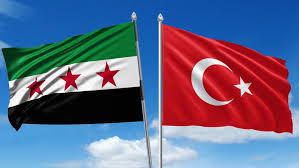Turkish-Syrian Business Council: A Gateway to Reconstruction and Regional Balance Challenges

The agreements signed between the two countries included:
Memorandums of Understanding in the fields of administrative development, governance, transportation, and customs.
Joint industrial projects, including the production of the first industrial sample at the Turkish "Mixte" factory.
Plans to build industrial cities and train Syrian labor.
Significant tax preferences for Turkish investors, including tax exemptions for agricultural projects and an 80% reduction for factories exporting half of their production.
The council's president, Dr. Osama Qadi, believes that the presence of more than 4 million Syrians in Turkey forms a natural bridge for cooperation, as:
Syrian labor has integrated into the Turkish market. Syrian businessmen have launched projects worth billions of dollars. Turkish expertise has contributed to training Syrian cadres.
To prevent the exploitation of labor or capital, the agreements stipulate localizing jobs and requiring foreign companies to employ at least 60% of Syrian labor. They also ensure the protection of workers' rights and prohibit the seizure of properties without a judicial ruling.
Despite official optimism, the partnership faces serious obstacles such as the collapse of infrastructure in Syria, security disturbances in some areas, complex administrative bureaucracy, and fears of economic dependency on Turkey.
Success depends on both parties' ability to translate agreements into tangible projects on the ground, addressing infrastructure and security failures, and ensuring a balance of interests instead of a dependency relationship. Additionally, attracting parallel Arab and international investments is crucial.
The council represents a historic opportunity to revive the Syrian economy, but it carries the risk of turning Syria into a market dependent on Turkey. Success will depend on Damascus's wisdom in balancing relations and Ankara's ability to present a cooperative model different from the Iranian model.